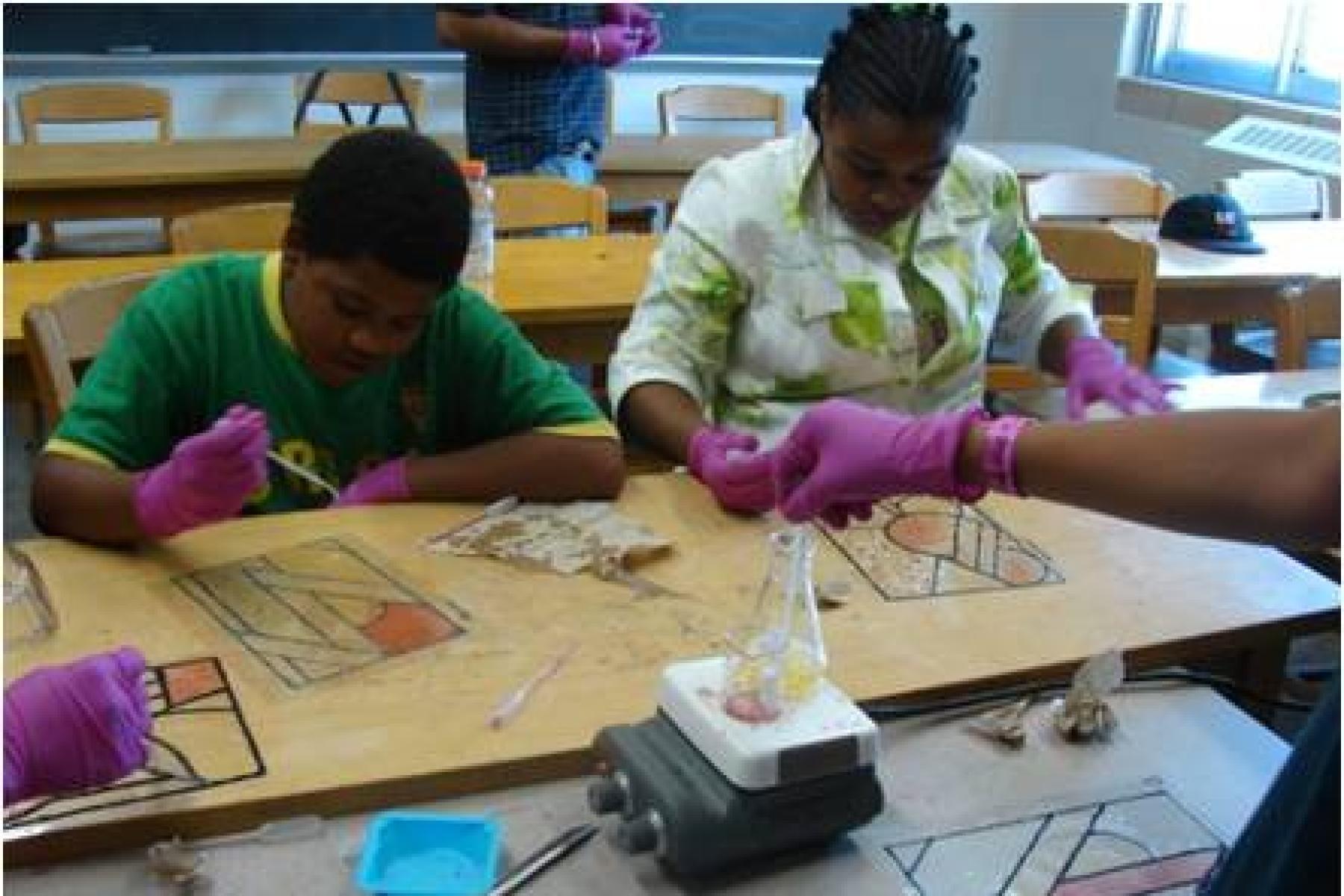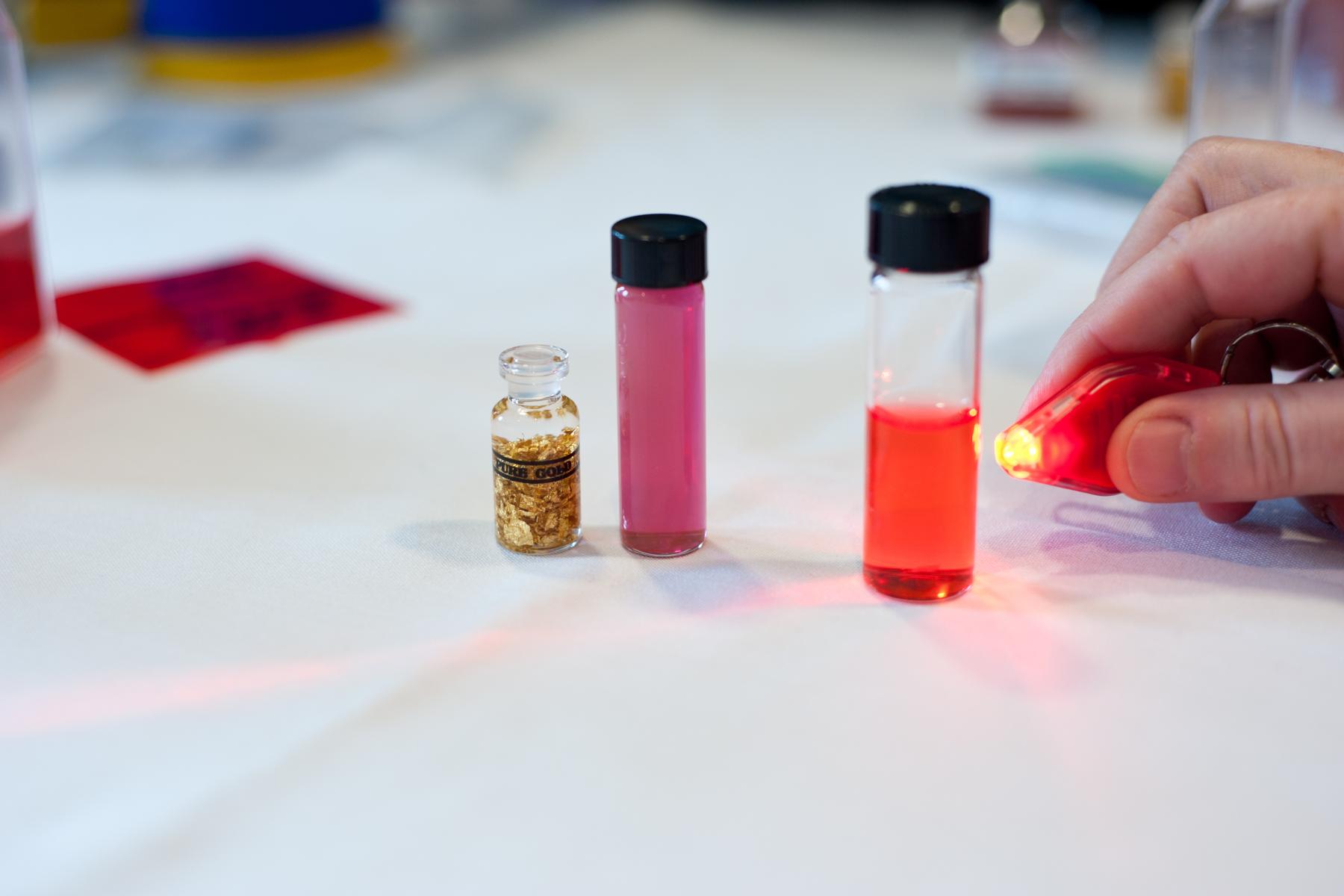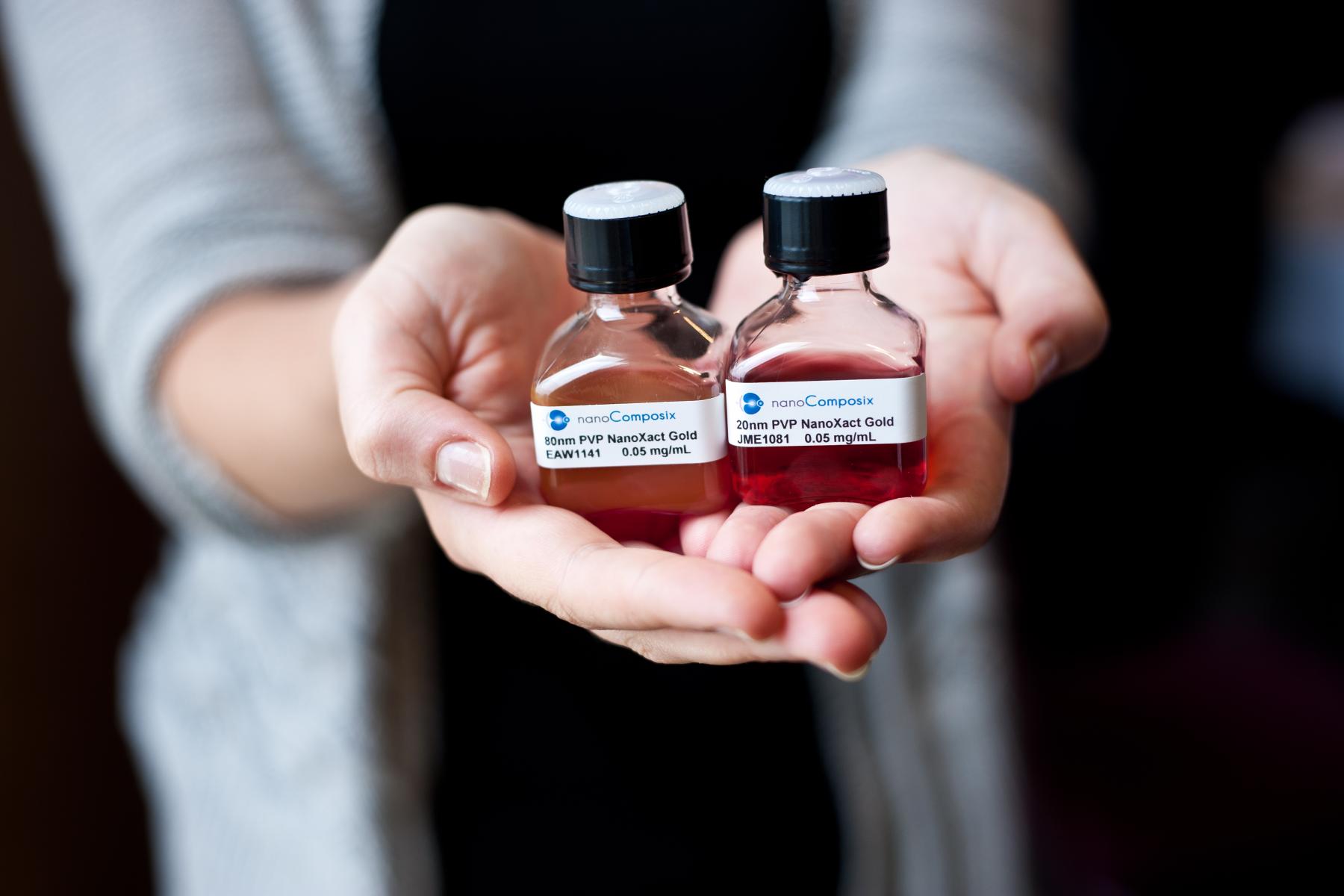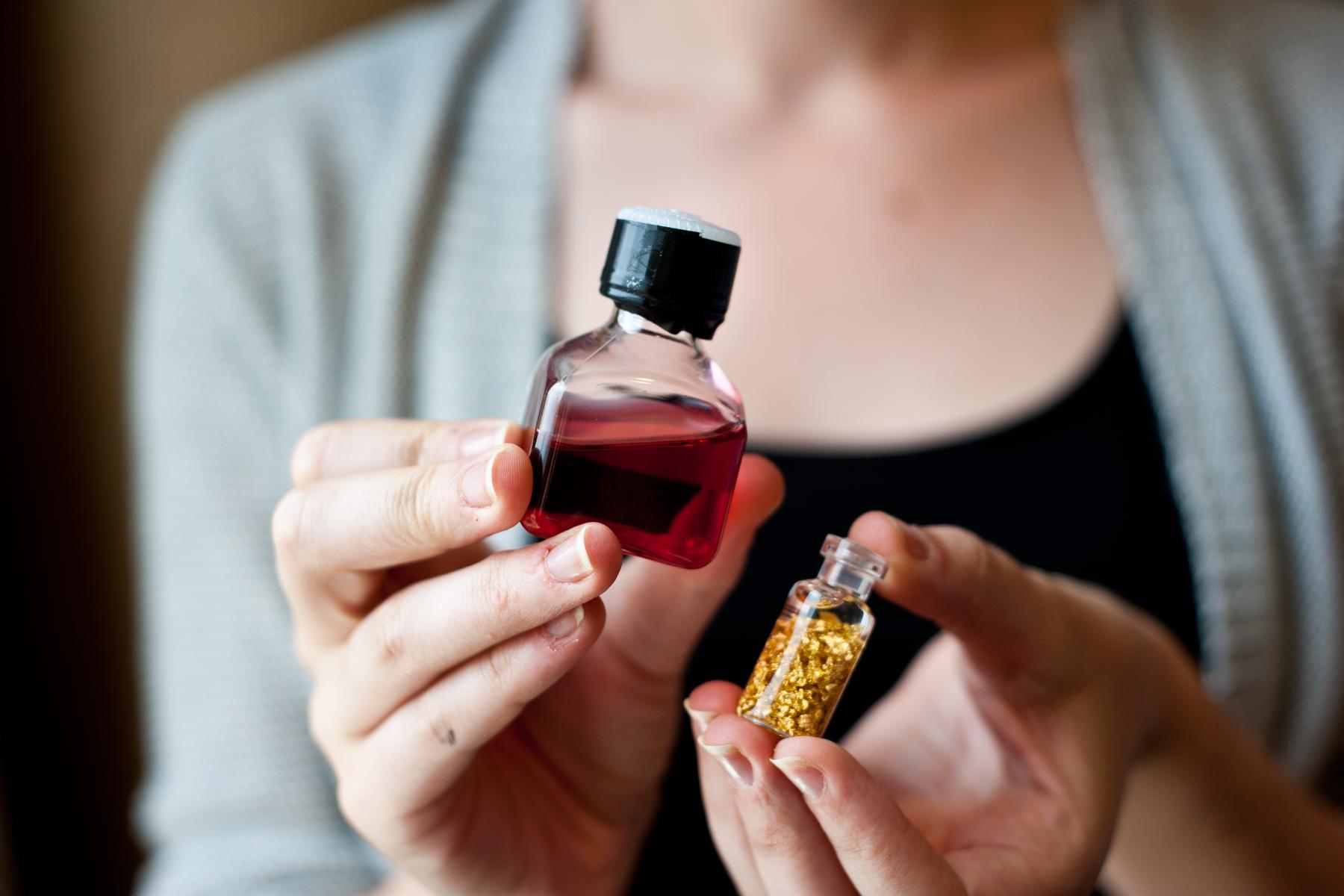DESCRIPTION
"Nanostained Glass" is a classroom activity that has three parts: a presentation, a lab activity and an art activity. During the presentation, students are introduced to the connections between art and science, with a focus on the connection between stained glass and nanotechnology. Students also learn that gold and silver behave differently at the nanoscale. During the lab activity, students synthesize nanoparticles of gold and silver. Lastly, students use the nanoparticle solutions they synthesized to create a stained "glass" window to take home with them.
DESCRIPTION
"Nanostained Glass" is a classroom activity that has three parts: a presentation, a lab activity and an art activity. During the presentation, students are introduced to the connections between art and science, with a focus on the connection between stained glass and nanotechnology. Students also learn that gold and silver behave differently at the nanoscale. During the lab activity, students synthesize nanoparticles of gold and silver. Lastly, students use the nanoparticle solutions they synthesized to create a stained "glass" window to take home with them.
TRAINING VIDEOS
OBJECTIVES
BIG IDEA
Interesting properties of gold and silver nanoparticles have been used for centuries by stained glass artisans.
LEARNING GOALS
Understand that nanoparticles of gold and silver behave differently than bulk gold and silver.
Appreciate the interconnection between science and art.
Learn that nanotechnology has been used since the Middle Ages, even though stained glass artisans did not know they were using this technology.
NANO CONTENT MAP
Nanometer-sized things are very small, and often behave differently than larger things do.
Scientists and engineers have formed the interdisciplinary field of nanotechnology by investigating properties and manipulating matter at the nanoscale.
DOWNLOAD FILES
- Nanoparticle Stained Glass Classroon program Lesson Plan (DOC)
- Nanoparticle Stained Glass Classroom program Lesson Plan (PDF)
- Nanoparticle Stained Glass program card - front (PDF)
- Nanoparticle Stained Glass program card - back (PDF)
- Nanoparticle Stained Glass Presentation Slides (PDF)
- Nanoparticle Stained Glass Presentation (PPT)
Credits
University of Wisconsin-Madison, MRSEC
Developed for the NISE Network with funding from the National Science Foundation under Award Numbers 0532536 and 0940143. Any opinions, findings, and conclusions or recommendations expressed in this product are those of the authors and do not necessarily reflect the views of the Foundation.
Creative Commons Attribution Non-Commercial Share Alike 3.0 United States (CC BY-NC-SA 3.0 US).
View more details

NISE Network products are developed through an iterative collaborative process that includes scientific review, peer review, and visitor evaluation in accordance with an inclusive audiences approach. Products are designed to be easily edited and adapted for different audiences under a Creative Commons Attribution Non-Commercial Share Alike license. To learn more, visit our Development Process page.




